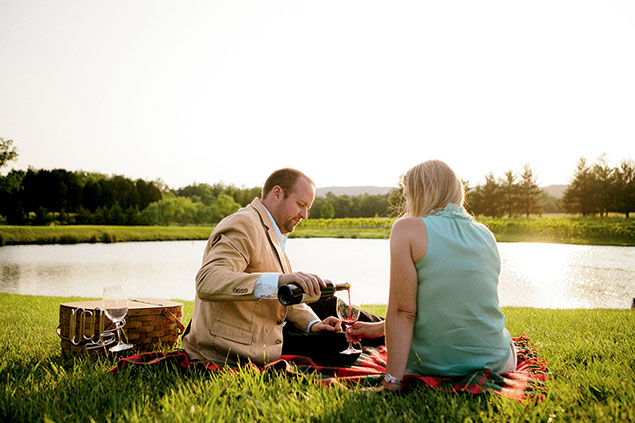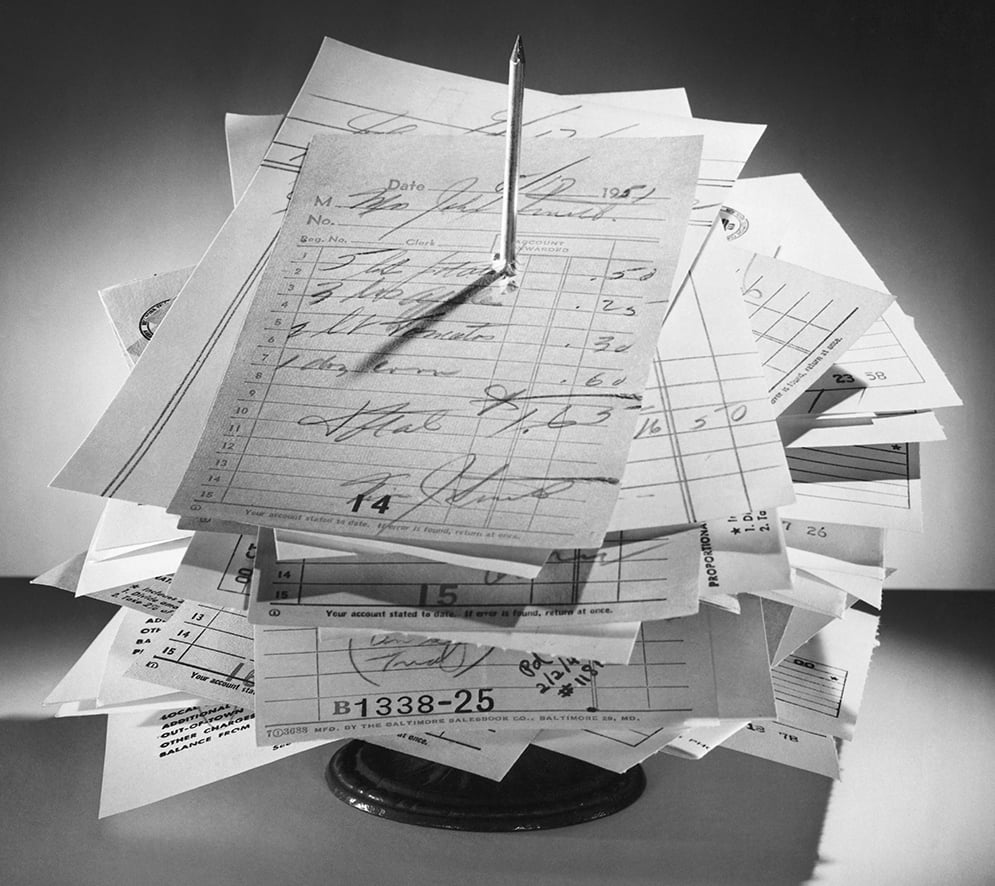The Insider
Anyone can waltz into a tasting room and sample wines. But you’re a connoisseur. You’ve sampled wines the world over. You want something more.
You want RdV in Delaplane.
Perhaps more than any other Virginia winery, RdV seeks to serve the discriminating wine drinker. Owner Rutger de Vink insists that would-be buyers make an appointment to sample his wines in what he considers their proper context: with food.
Unorthodox, to say the least, but then so is de Vink, a former Marine who is attempting to buck history and make world-class Bordeaux in a state that historically has been inhospitable to vinifera grapes. His yield is low—about 2,000 cases a year—and the prices high: His most expensive wine flirts with triple digits. But it’s hard not to be persuaded of the rightness of his approach after nibbling on a selection of cheeses, salami, and olives and sipping his wondrously expressive Rendezvous as well as his soft but powerful Lost Mountain. The lunch with tasting, which includes four wines, costs $40 a person.
Because visiting RdV requires a greater outlay of time than the usual winetasting, it makes sense to make a day and night of it. Book a table at the Ashby Inn & Restaurant (540-592-3900) for dinner. A 15-minute drive away in the town of Paris, it earned a spot last February on Washingtonian’s annual 100 Very Best Restaurants list. If you’re interested in turning a tasting into a gastronomic weekend, book a room and stay the night—the Sunday brunch is among the most memorable in the region.
The Picnic Lover
You needn’t be a dyed-in-the-wool oenophile to enjoy the fruits of Virginia wine country. For an inexpensive afternoon of family fun, bring the kids, dogs, and snacks to Barrel Oak Winery, about an hour west of downtown DC. A relaxed atmosphere permeates Brian and Sharon Roeder’s sprawling Delaplane spot, where a massive patio and lawn dotted with picnic tables accommodate warm-weather overflow and, indoors, a gift shop stocks artisanal cheddar from Pennsylvania’s Amish country along with meats from Cured DC.
A ten-mile drive from Barrel Oak, bright-red Philip Carter Winery in Hume is another easygoing place to wile away an afternoon among the vines. A spacious tasting room accommodates a crowd while, outside, drinkers play lawn games such as cornhole as they sip delicate Cabernet Franc and are welcome to cart edible treats from home. And bring their dogs.
At the northern edge of the state in Purcellville, dogs are also welcome at Breaux Vineyards, where vines grow on 105 acres of rolling fields. Groups large and small are invited to picnic on the outdoor tables. If you’re a Sauvignon Blanc fan, don’t miss the Jolie Blond—a citrusy white made from the popular Seyval Blanc grape varietal.
The Authenticity Seeker
You’re tired of Cabernet Sauvignon “fruit bombs.” Bored with oaky, buttery Chardonnays. You’re dying to try something new. Lucky you, because Virginia is producing distinctive, interesting wines that taste of their place and nowhere else.
In the wine world, the shorthand is terroir—a French word that means more than “earth,” encompassing the qualities of air, soil, and season that give a wine its soul. The French believe wines are made in the vineyard, not in the cellar, and that no amount of chemical tricks can deliver what nature, properly tended, can.
Chrysalis Vineyards in Middleburg has built its reputation on alternative wines, and owner Jenni McCloud showcases a grape you may never have heard of: Norton. First cultivated nearly 200 years ago in Richmond, Norton is the grape that brought American wine to the attention of the world. It produces a big, inky red that tastes like nothing else on the market—fruity, earthy, and with an unexpected acidity that takes the heft out of game meats and sausages. It’s an ideal table wine for fall and winter. For something diametrically opposed, seek out the Albariño, a lively white originally from Spain with bracing acidity and good fruit that pairs well with everything from heirloom tomatoes to takeout Chinese.
Viognier, which the state has endorsed as its signature wine grape, was introduced to Virginia two decades ago by Dennis Horton at Horton Vineyards in Gordonsville. He still makes one of the best. Viognier is riper and more luscious than Chardonnay, and Horton’s is an ideal pairing with lobster.
Glen Manor Vineyards, under the direction of winemaker Jeff White, has been producing some of the finest wines in the state over the past few years. The Front Royal winery bills itself as making “wines with a sense of place,” and all it takes is one long, lingering sip of the 2010 Hodder Hill—a blend of Cabernet Sauvignon, Merlot, and Petit Verdot—to realize you’re not in California anymore. Or France. Or South America. This is a supple, complex, elegant wine that tastes like nothing so much as itself.
The Value-Minded Drinker
Delaplane’s Vintage Ridge Vineyard is home to a friendly tasting room that opens onto a lovely back-yard patio with an outdoor bar. Owners Vicki and Bill Edmands are selling their stunning, tree-lined property, which you reach via a winding stone road. We hope that whoever buys the winery maintains the premier pairing menu. Available the first weekend of each month, the $18 offering includes seven wines plus a lineup of cheeses and appetizers to savor with them.
Rappahannock Cellars, an hour and a half west of DC in Huntly, has picnic tables boasting great vistas. Come winter, guests stay warm in a butter-walled tasting room where they can sip eight wines—including a Meritage, a Cabernet Franc, and a crisp Viognier—for just $8.
The Curiosity Seeker
If you’re seeking the oenological equivalent of speed dating, you can hardly do better than make the 2½-hour drive south to Charlottesville. The Monticello AVA—American Viticultural Area, a designation that recognizes a geographically significant wine region—includes more than three dozen wineries, including a number of our favorites.
Barboursville Vineyards, about 30 minutes north of the University of Virginia on rolling hills reminiscent of the Italian countryside, is one of the state’s oldest wineries, having set up shop in 1976. It’s still producing some of Virginia’s best wine, thanks to winemaker Luca Paschina, including its signature bottle, Octagon, a red blend of remarkable depth and length that has been poured for both President Obama and Queen Elizabeth.
About 20 minutes east of Charlottesville, in Crozet, is King Family Vineyards. The winery has made its name with reds, and it makes an outstanding Meritage, a robust example that could replace your favorite Cabernet Sauvignon the next time you have a grilled steak. Keswick Vineyards leans more toward vinifera wines: Standouts are a Cabernet Sauvignon that won gold last year in the Virginia Governor’s Cup.
DelFosse Vineyards & Winery, about 30 minutes southwest of the university, is also known for its success with vinifera; its unoaked Chardonnay is often excellent.
Thirty minutes west of campus is one of the most gorgeous properties in the state—Veritas Vineyard & Winery in Afton, with postcard-perfect views of the countryside Thomas Jefferson liked to call “the sublime” (and a busy docket in wedding season). Go for winemaker Emily Pelton’s labor of love, Kenmar, an aromatic, mouth-coating ice wine that nicely balances sweetness and acidity.
Jefferson Vineyards, two miles south of Monticello, has made good, two centuries later, on Thomas Jefferson’s vision: Cabernet Franc, traditionally a blending grape in the Old World, is the featured grape in the winery’s best bottle. (Look for the 2011 non-vintage.)
On an idyllic patch of land seven miles south of Jefferson’s masterpiece sits a winery named for a man who would seem in every way the Founding Father’s opposite. But Donald Trump—yes, the Donald is growing grapes—has had more luck in a few years than Jefferson ever did in more than three decades of trying. Trump Winery’s sparkling wines in particular are worth seeking out: a refreshing rosé and a blanc de blanc.
The Tasting-Room Lingerer
You’ll work up an appetite tasting through the lineup of estate wines at Boxwood Estate Winery—where stone walls and floors contrast with glass and steel accents. Before you go, head to nearby Market Salamander in downtown Middleburg (200 W. Washington St.; 540-687-9720) for cheese and crackers or a selection of picnic goodies that includes crabcakes, Red Bliss potato salad, and roast chicken with stone-ground mustard. The educated staff at Boxwood walks guests through the Bordeaux-style reds at a relaxed pace and welcomes them to linger at tables indoors or on the cozy front patio.
About 30 minutes west of Boxwood, Delaplane Cellars houses an enormous tasting room with vaulted ceilings, lots of windows, and a sprawling patio overlooking the vineyards. You can sip six wines for about $7, including a tasty Merlot augmented with a little Cabernet Sauvignon and Cab Franc, as well as the Cinq3, a fruity blend.
A serpentine driveway leads you to nearby Naked Mountain Winery & Vineyards in Markham, where owners Randy and Meagan Morgan maintain an easy-going atmosphere inside the log-cabin-like tasting room. Snack on a selection of dips or a cheese plate as you try eight wines, including a tasty port-style selection.
A version of this article appears in the October 2013 issue of Washingtonian.


















